Greece
November 19 - 27, 1999
Athens, Corinth, Mycenae, Epidaurus, Olympia, Delphi, and Meteora
Our 11/19/99 to 11/27/99 trip to Greece was wonderful and definitely full of surprises. I did not realize that I knew so little about Greece.
We had decided to take a land tour with a company named Globus. We flew into Athens on the same day that President Clinton was there. On the news the night before, we had heard that there had been a riot of 10,000 people. Needless to say, we were very nervous. Our taxi driver had to take a round about route because several streets were blocked off due to Clinton.
Finally we arrived at the Hotel Novotel. By Greek standards, it is a four star hotel; but by American standards, maybe a generous one star. The service was impeccable and the rooms were large and clean. The only “wrong things” were really unimportant, like a frayed bath towel or plain rooms without a single picture on the walls. The air conditioning was adequate, but not cold enough for us.
Athens was a huge disappointment. It is a city that grew too fast and without benefit of a master plan. It is very polluted and extremely noisy. The traffic is absolutely unbelievable. I cannot imagine what it will be like during the upcoming Olympics. When you stand atop the Acropolis and look in any direction, all you will see is “city”. It is huge! They are trying to build a subway, but it is nowhere near completion.
Sunday morning we got on the bus with a total of 40 sightseers. Our very nice looking driver was named Zackus.
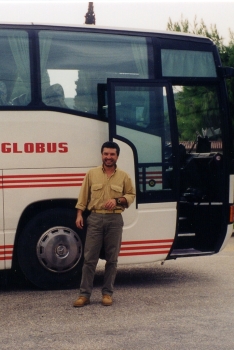
Our guide was named Poupi. She told us that all Greek guides are educated and regulated by the State. They have to go to school for three years before they are certified. Then they can either go with a company or freelance. Poupi was fabulous! Not only was she knowledgeable, she had that rare ability to make history come alive.

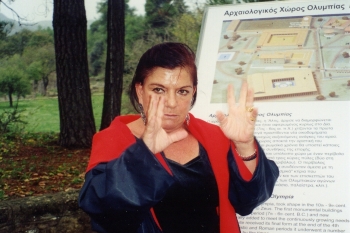
Corinth
We visited Corinth, which was inhabited in prehistoric times, at least from 4000 B.C. Folks, that’s BEFORE the Bronze Age! The Canal, which divides the Peloponnese from the rest of Greece, was planned from ancient times. Construction was attempted as early as 67 A.D., but it wasn’t actually cut until between 1881 and 1893.

We saw the ruins of temple of Apollo, built around the middle of the sixth century B.C. and reconstructed in 44 B.C. The temple of the Empress Octavia was also built during the Roman period. We also saw where St. Paul preached to the Corinthians in 52 A.D.


The Corinth museum, which was erected by the American School of Classical Studies, was quite impressive.
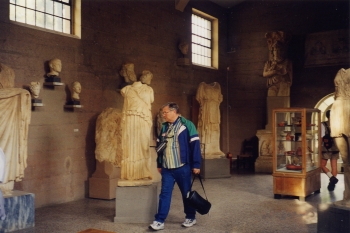
Mycenae
The next place we toured was the ancient citadel of Mycenae, which means “rich in gold”. The site had been inhabited very early in the Neolithic times. It was at its peak, however, during the period 1600 – 1100 B.C., which came to be known as the Mycenaean Period.
We saw the Lions Gate where you enter the Citadel at Mycenae. The triangle area above the lintel depicts two lions and is Europe’s oldest known monument having been constructed about 1250 B.C.
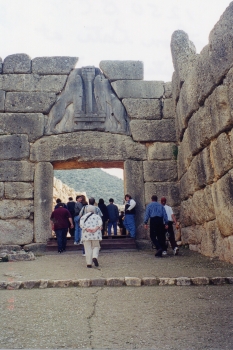

Within the Citadel the Mycenaeans built Grave Circles. These circles contained the bodies of the royalty in a shaft - type grave, along with a selection of that person's personal things.
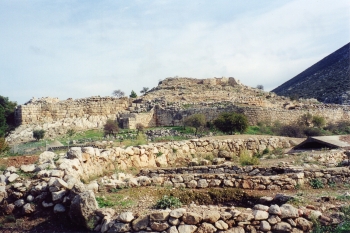
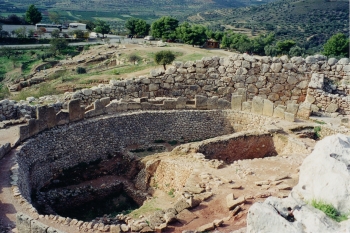
In Mycenae, but outside of the actual Citadel we went into a Beehive tomb that was from 1250 B.C. It’s called a beehive because that’s what it looks like on the inside. This particular one belonged to the family of Atreus, and was the grave of his heir Agamemnon, among others. The passageway leading into the tomb is 36 meters long and 6 meters wide. Inside, it seemed huge. Poupi told us that it served a dual purpose. It contained the family treasury, but was also used for the dead family members. When someone died, the body was placed in the middle of the floor within a circular area. It was left there until the next person died. Then the bones of the first person were swept to the side of the tomb.
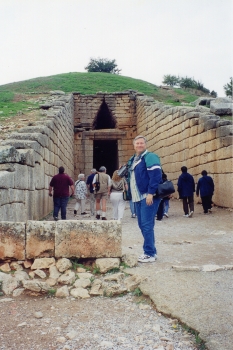

Epidaurus
At Epidaurus we saw a huge open-air theatre, which could accommodate 6,200 in the audience and dates from the third century B.C. The acoustics are such that we stood in the middle of the circle and talked in a normal voice, and could be heard on the topmost row!
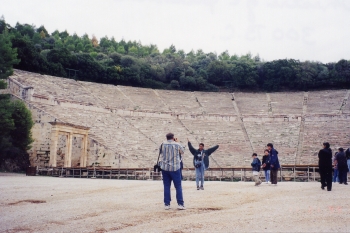
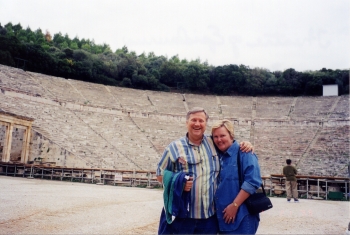
Olympia
In Olympia we toured the ruins of the Altis, which was the enclosure where the sacred buildings were. Excavations have proven that the area was inhabited in prehistoric times. Actual buildings, homes, and graves have been found dating to 1900 – 1600 B.C.
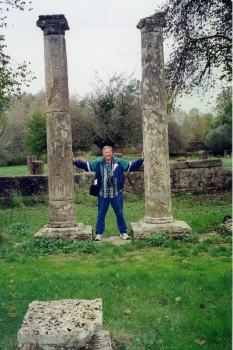
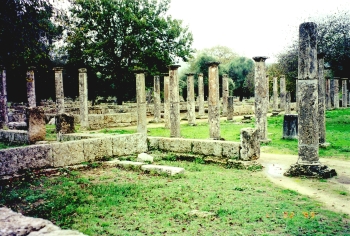
We saw where the original games were played from 776 B.C. until they were abolished in 393 A.D. Women were not allowed to attend, and the athletes competed naked.
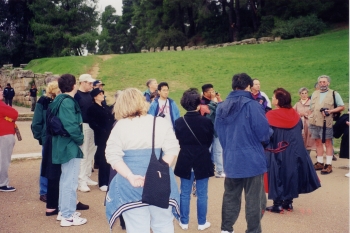
One thing that surprised me in Olympia was that there is no “eternal flame”. I had envisioned a flame where every four years the torch would be lit and carried to the country where the games are to be played. There isn’t one, but to me there should be. They do hold a ceremony every four years in the exact spot where the original flame was lit. Then the runners carry the torch across Greece and into the Olympic stadium in Athens where it is passed to representatives of the host country.

Next we toured the Olympia Museum where we saw some impressive pediments from the Temple of Zeus as well as many well preserved statues.
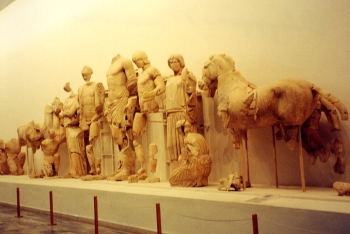

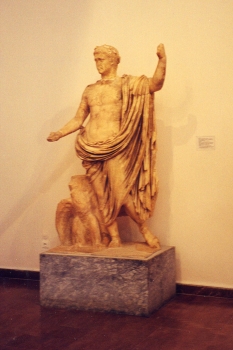
Delphi
From a geographical standpoint, I was aware that Greece was mountainous; but I didn’t expect such BIG mountains. It was quite an experience to be in a large bus going around hairpin curves with sheer cliffs on one side and bottomless pits on the other.
It was worth it when we arrived in Delphi. The hotel we stayed in that night was perched on a mountainside overlooking the harbor. Our room had a tiny little balcony from which we watched a beautiful sunset. After which, a full moon cast its glow over the snow-capped mountains surrounding the valley. It was absolutely breath taking!!!!!!!!!

Delphi was considered the navel of the universe, the center of the earth. Legend says that Zeus wanted to know the location of the center of the world, so he set two eagles free. One flew east and one flew west. Eventually, they met in Delphi and landed on a large stone thus determining the navel of the world.
Human traces date back to 4,000 B.C. It didn’t become Apollo’s famous oracle until around 1,300 B.C. By 700 B.C. it was world famous and people came from all over to consult the oracle about everything from where to locate a new town to whether or not they would be successful in a proposed war. The oracle complex was huge, consisting of many buildings in addition to the multiple temples and treasuries. There was even a stadium.
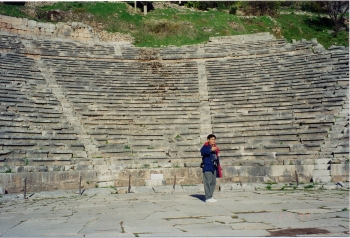
The many temples and sanctuaries at Delphi suffered over the centuries from man pillaging the treasures left there as offerings to the gods. Natural disasters also took their toll, as the area was prone to earthquakes and landslides.


Temple of Apollo
Today, the museum at Delphi offers one of the better displays of artifacts that span the entire history of Greece.
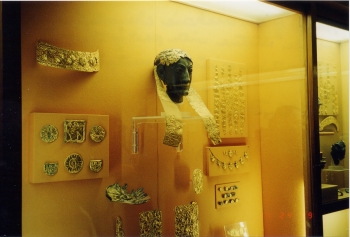
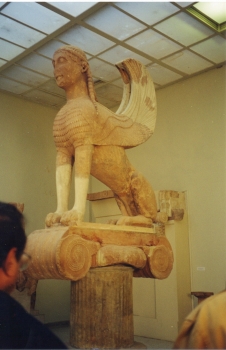
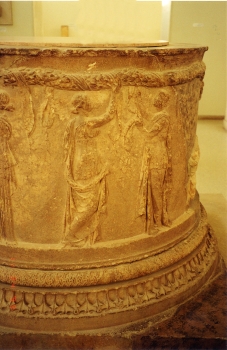
Meteora
After surviving the worst of the hairpin turns, we arrived at an unreal, fantastic landscape. Meteora is so unlike anything we had ever seen. Trying to describe the site without pictures is totally useless. On the other hand, unless you have professional camera equipment and a helicopter, the pictures you take cannot grasp the enormity of the area. Therefore, I have included a few pictures from one of the souvenir books we purchased.
We had been traveling over rather flat land, when in the distance we saw a group of huge monoliths. As we drew closer, we saw that on top of 24 of the "rocks" were 24 separate monasteries or nunneries.
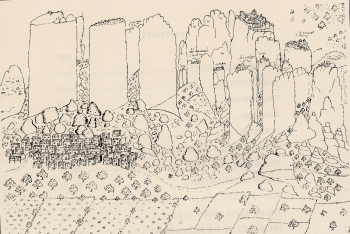
Drawn by Barskij in 1745
From a distance, they looked totally inaccessible, and a few of them actually were. The one used in the James Bond film For Your Eyes Only still has to be reached by climbing the mountainside.


Metamorphosis Rousanou


Holy Trinity Inside St. Nicholas
We were able to go inside two of the monasteries, St. Nicholas and St. Stephen, which could be reached by bus.

Notice the rope for hauling items up to the monastery.
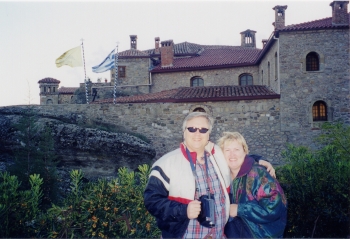

St. Stephen Nunnery View from St. Stephen
On the way back to Athens, we stopped at an icon factory. We watched the monk and his students make the religious icons.
![]()
![]()
Monk paints picture Applying the gold leaf
I asked Poupi about their use and significance in Greek life today. She told me that she had chosen her personal patron saint when she was very young. In her home she has made a shrine which includes that saint's icon. Each day she says her prayers before that shrine.
We found the making of the icons so interesting that we purchased one. It is, of course, of St. Michael. Poupi found out that it was Carol's birthday, so she presented her with a small icon painted on a rock.
![]()
Athens
By Friday, we were back in Athens for a city tour. On our way to the Acropolis, the police rerouted our bus because a protest was taking place ahead of us. We could see the demonstrators with their banners stretched out across the road. We were, at that particular time, in the location of the previous anti-Clinton riots. We saw a few buildings with windows busted out, and one burned up newspaper stand. I can tell you, I was very uneasy since the bus had huge windows. I could picture a rock being thrown at me. We found out later, that this particular demonstration had nothing to do with the U.S.
Other than that one time plus a little bit of graffiti outside of Athens, we did not encounter any anti-American sentiment. As the tour director told us, it was only a few dissenters near the University causing the trouble. Even those people didn’t hate Americans. They just resented Clinton’s trying to force them to the bargaining table with Turkey. (They are arguing over ownership of one of the islands.)
The Acropolis with its Parthenon is exactly as you pictured it. One must do a bit of climbing to get to the top; and although most of the way has steps, it is a good climb.
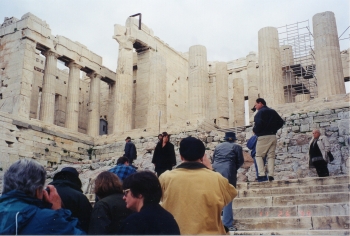


Many of the original statues have been removed to a climate controlled museum for safe keeping, and replaced with replicas. The Caryatids are six female statues set instead of columns on one side of The Erechtheum. One of the originals is now in the British Museum, while the other five have been removed to the Acropolis Museum. They dated from around 421 B.C.
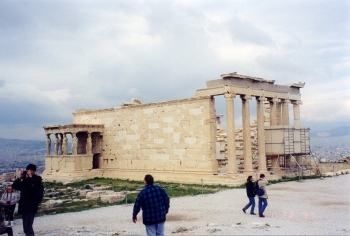
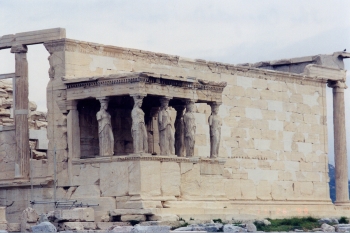
The view of the city of Athens from atop the Acropolis allows you to understand why the city is in the shape it is. Even from up there, as far as the eye can see, in all directions, there is a pure example of unchecked urban sprawl.
That night our tour included a sampling of the nightlife in the Plaka. We all gathered at a restaurant to sample the local fare along with some entertainment. The belly dancer tried her best to teach Mike how to swing and sway. We also enjoyed the traditional dancing demonstrated by local men.
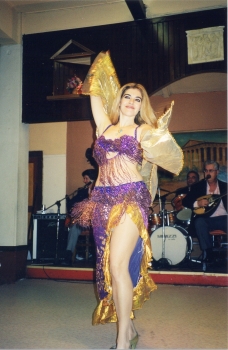
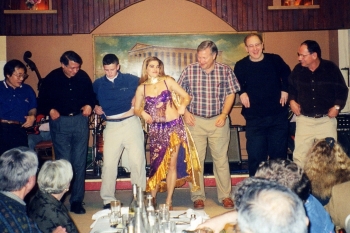

On Saturday, from our hotel to the Miami airport, it took 20 ½ hours for our return to the U.S., then another 2 hours to clear customs and drive home. So that’s it. We loved Greece, and we intend to return and do a cruise of the islands, maybe even next year. Who knows!